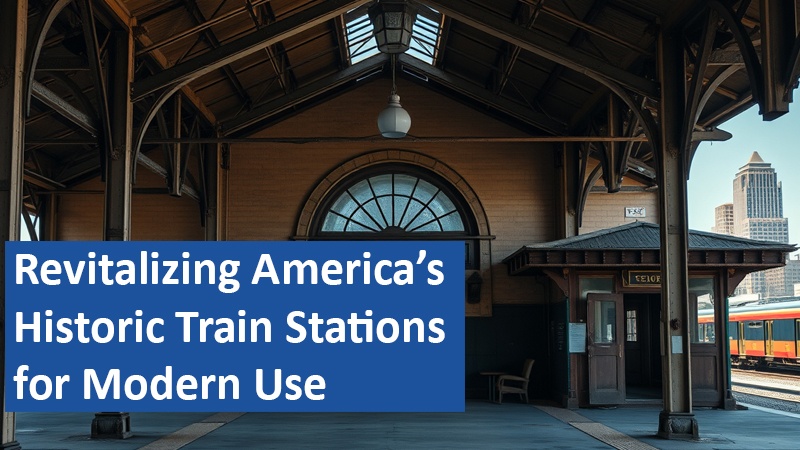Once-abandoned train stations across the U.S. are finding new life as hotels, restaurants, and cultural hubs. These historic structures, built to accommodate thousands of daily travelers, are now being repurposed to serve communities in innovative ways. From Detroit to Denver, developers are investing in renovations that preserve architectural heritage while promoting economic growth.
By Milo Houston
Michigan Central Station: A Billion-Dollar Transformation

In Detroit, Michigan Central Station stood abandoned for decades, falling into disrepair and becoming a symbol of urban decline. Now, thanks to a $1 billion investment from Ford, the station has been transformed into a multi-use facility. The renovated complex includes office spaces for startups, public parks spanning 13 acres, and a hotel occupying four floors of the main tower. This ambitious project is restoring a historic landmark and redefining the area as a hub for business and innovation.
Denver’s Union Station: A Blend of History and Luxury
Once welcoming 50,000 passengers daily, Denver’s Union Station saw a decline in rail traffic over the years. In the early 2000s, it underwent a $54 million renovation, turning it into a vibrant space featuring cafés, retail stores, and a high-end hotel. The revival of Union Station also led to a resurgence in train travel, with rail traffic increasing to 10,000 passengers per day by 2024. Today, it stands as a model of how historic preservation can blend seamlessly with modern urban development.
Salt Lake City’s Union Pacific Depot: From Rail Hub to Boutique Hotel
Salt Lake City’s Union Pacific Depot saw diminishing rail traffic after Amtrak relocated operations in the 1980s. The building remained largely unused until 2006, when part of it was converted into a restaurant and music venue. By 2024, it had undergone a full transformation into the Asher Adams Hotel, featuring 225 rooms and 13 luxury suites. The depot now serves as a gateway to The Gateway, a mixed-use business and shopping district that preserves the station’s historic architecture while supporting economic revitalization.
The Case for Preservation Over Demolition
The trend of repurposing train stations is not just about nostalgia—it also makes economic and environmental sense. Experts argue that restoring historic buildings is often more cost-effective than demolishing and constructing new structures. Architect Diana Melichar emphasizes that well-built stone and brick train stations can last another century with proper maintenance. As cities continue to grow, these preservation efforts ensure that historical landmarks remain functional and relevant for future generations.
The transformation of old train stations into thriving modern spaces showcases the value of historic preservation in urban development. By adapting these structures for new uses, communities can celebrate their heritage while fostering economic sustainability.
Based on content from www.goodnewsnetwork.org and own research.